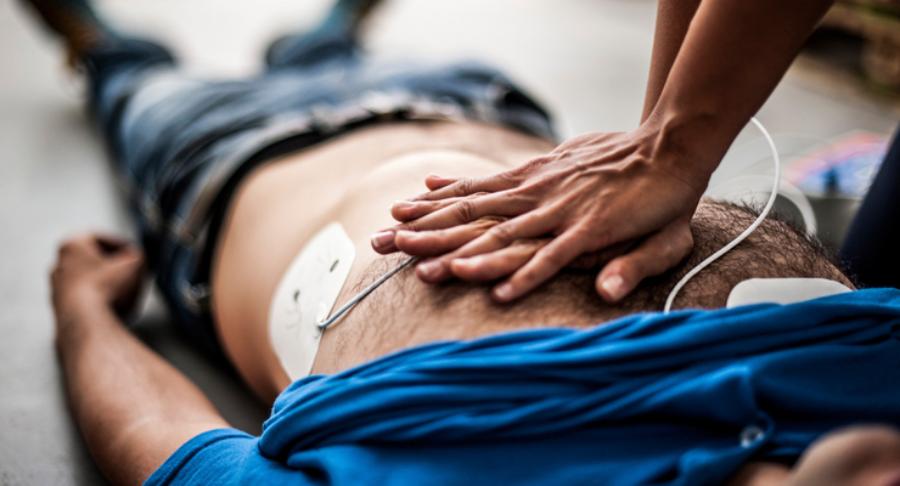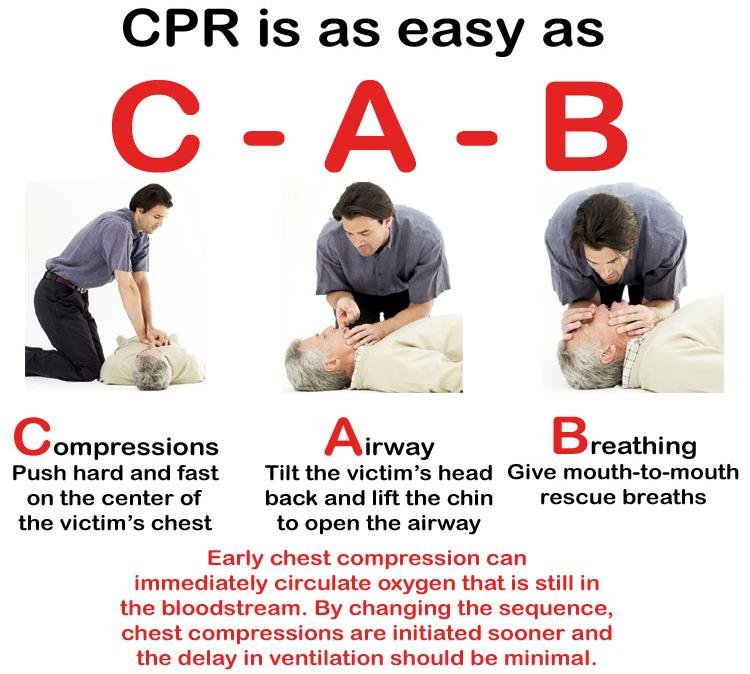By Ankita Purohit
Cardiopulmonary Resuscitation (CPR) Training and Steps to Implement

There are several kinds of heart conditions, among which heart attacks, strokes, and cardiac arrests are quite common in the world’s population. It is one of the leading cause of out-of-hospital deaths. This is why the term CPR comes into the picture. If a person goes unconscious suddenly, he/she needs immediate assistance within the first few seconds. This should be done before the ambulance arrives. The condition is so quick and severe that only the presence of mind saves the life. If a person is not medically trained, he/she won’t be able to assist the patient with confidence (except for calling the ambulance) and so the likelihood of death magnifies.
As a citizen of the world, we should be involved in saving lives of those individuals who suffer. The CPR (Cardiopulmonary Resuscitation) training therefore is a must for everyone of us in order to successfully achieve that. But before proceeding to its details, you must be familiar with some of the medical terms. So let’s get started.
What is a cardiac arrest?
The term cardiac arrest refers to sudden stoppage of heart function, meaning it stops beating and the person goes unconscious due to lack of blood supply throughout the body. It is not the same as heart attack that most people misinterpret. Heart attack is the condition in which the blood supply is obstructed to the heart, thereby causing mild to severe pain at the heart region and/or other surrounding areas. It is possible that a heart attack may cause cardiac arrest but these are two different terms. Cardiac arrest may also be caused due to any other heart conditions, or no previously diagnosed signs and symptoms at all.
What is CPR?
It is possible that common people, who have little to no medical knowledge, somehow manage to keep the person alive by few techniques, until the patient actually seeks the further treatment (Emergency Medical Services). But one cannot simply do this until given proper training. Cardiopulmonary Resuscitation (CPR) training is there for the rescue. It is a proven technique which can save several lives. You must have noticed while watching films that how a person handles if someone gets unconscious because of drowning or some other cause. What they do is chest compression a number of times to a particular intensity and constantly supply enough of air through their mouth. This will not let stoppage of oxygen flow, and hence tissue damage (and perhaps death) could be prevented. Now one has to be confident enough to act quickly and rescue somebody who is in potential danger.
When is the time to provide CPR? How many times one must do the chest compressions and to what depth? If you are not familiar with these questions, you cannot feel confident about tackling the situation. The detailed oriented step-by-step training has to be given to not only prevent deaths from cardiac arrest but also from choking, road accidents and severe internal/external bleeding, drowning, electric shocks, Epilepsy, burns, food poisoning, and snake bite. Once rescued, the patient could then be brought to the hospital for further Emergency Medical Services (EMS).
Let’s suppose someone at your workplace suddenly gets collapsed. So, what will you do? First of all, you get to prepare yourself to not getting mentally numb because this prevents the proper assistance. Always remember the 3s of CPR performance – Compressions, Airway, and Breathing – also known as CAB. Now, follow the following steps:
1. Tap and shout in order to recognize the depth of the situation. Say words like, “Hey, are you OK?”, loudly. If the person is not able to respond at all then prepare yourself for step 2.
2. If you are the only bystander, then first call the Ambulance and then proceed with the Cardiopulmonary Resuscitation procedure. If someone else is there with you, you may then tell the other person to call Ambulance and you do the CPR yourself, or vice versa if this ‘other’ person is CPR trained as well.
3. Check the breathing and pulse rate so that you get the idea whether the patient is going to get to normal state, which is likely not. Sometimes the faintness is not due to serious cause. If the breathing almost stops and the pulse rate goes down, recognize that it is a matter of concern. The patient of sudden cardiac arrest suddenly collapses. The bystander needs to attempt to tap on the victim’s shoulder with an expectation of a response. Checking for pulse rate is a matter of fractional seconds but since each moment is precious, it is less recommended at present.

Compressions
1. Let the person lay on his/her back on a flat and firm surface.
2. Kneel down at the side of his/her neck and shoulders.
3. Take your right hand and place its heel over the center of his/her chest, i.e. between the nipples.
4. Take your other hand over the first hand and make a position in a certain manner so that your elbows don’t bend and both the hands are kept straight. You have to keep both of your hands straight, in such a way that your shoulders are positioned right above your hands.
5. While you push your hands inwards straight down, always remember to also put the weight of your upper body (not the whole) and not just your arms for about 2 inches (or approximately 5 centimeters) but avoid excessive pressure of around 2.4 inches or more (over 6 centimeters). Ensure that the compressions are very fast, at the rate of 100 to 120 within 1 minute.
For those who are not trained enough or are new to this, do this till you notice the signs of body movements or the medical personnels arrive at the spot. It is extremely tiring task and so you might not be doing it as effectively as you did in the first few minutes. So, what you do is instruct somebody else who was there with you the entire time. It is best if he/she is trained as well. Always remember that the victim’s heart cannot beat on its own, and your hands are like his/her artificial heart and the compressions are his/her heartbeats. This is why it is extensively important for you to perform this action swiftly. You are the savior!
Airway
1. For those who have already sought CPR training, open the person’s airway and give him/her two breathes (for 1 second each time, i.e. within 2 seconds in total) after every 30 compressions in count. This is known as 1 cycle. Do this by putting your palm on the forehead, tilting the head back, and finally lifting the chin forward. This allows free flow of air through the oesophagus. Avoid extended duration like 10 seconds or even more while giving breaths. Else your dedication would go in vain.
2. Take no more than 5 to 10 seconds in determining whether or not the person has started breathing normally. Gasping is not normal and not considered as breathing or any kind of conscious response, and so repeat the steps as explained continuously. Begin mouth-to-mouth breathing. If you are not trained and already know that the person collapsed in front of you is a heart patient as well, continue with your chest compressions but skip this part.
Breathing
1. The breathing could be mouth-to-mouth or mouth-to-nose. The mouth-to-nose is preferred in case the mouth-to-mouth is not possible at all, such as in the presence of an injury, or when the mouth cannot be opened at all.
2. If you are doing mouth-to-mouth (in most cases), then make sure that the nostrils get sealed through holding them tight, thereby allowing you a single path for giving him/her the much needed air. The same goes for mouth-to-nose. You will need to block the mouth completely. Avoid too much force but it must lift the chest upwards. The chest visibly rises each time the blow is given. If it doesn’t then repeat. If someone else is also there at the spot then you must give them the instructions for the breathing part and you handle the compressions. This is because each second is crucial and you should avoid wasting even a fraction of interval.
There are equipments available to provide the airflow of about 500 milliliters, in place of doing that directly through mouth. Automated External Defibrillator (AED) is yet another device that the trainees learn to use during this crucial time. Soon after the compressions are given, it helps to improve the condition in case the patient shows no sign of movement or breathing. But the thing is, if someone is out of medical settings, these equipments might not be available and so one must know how to tackle the situation without them as well. The above points are the basics which one cannot forget. Soon after the training is completed the person is given a certificate which is valid for 2 years.

What if I need to do the CPR for children or an infant?
The process for adults, pre-teens, teenagers, toddlers and infants are same, just a minor difference of the intensity to be applied and other minor strategies.
In case of a child (over 1 year till puberty), first of all remove the obvious obstructions like food, loose teeth, blood, or vomit. Pinch the nose in such a way that it gets shut and the breathe could be given directly through the mouth. In case of an infant, do not cover either nose or mouth, instead make a complete seal to both so that the breath goes through both the openings. Do not do this with full force but a gentle puff by holding a small amount of air inside the mouth and deflate right at the moment when necessary.
The compressions must be done using one hand (about 2 inches deep) if the victim is a child above 1 year of age, and 2 fingers (up to 1.5 inches at the most) if the patient is an infant under 1 year. The compressions are 30 in count at the rate of 100 to 120 per minute, with a blow of little air twice to complete one cycle. Repeat till the breathing appears normal or the medical staff arrives on spot.
Do NOT tilt the baby’s head/neck or lift the chin, like you would do to an adult while performing for CPR. The recovery signs of baby are typically observed through cough, cries, movements, and/or normal breathing. Do NOT use Automated External Defibrillator (AED) in case of an infant or very young child. It might do more harm than good.
CONCLUSION
If the CPR assistance is not given within the first 4 minutes the patient might suffer from permanent brain damage. Within 8 to 10 minutes the probability of coma or death magnifies to many folds. Always remember that the chances of survival for a patient increase by double or triple if CPR is given, else 90% of the cases end up into deaths, before they even arrive into hospitals. Doing something is better than doing nothing at all!





